Nano-Scale Positioning Design with Piezoelectric Materials
Abstract
:1. Introduction
2. Problem Formulation
2.1. Hysteresis Phenomenon of Piezoelectric Materials
2.2. Single-Phase-Driven Piezoelectric Material
2.3. Modelling for Piezoelectric Materials
2.4. Set Up of the Practical Measurment Platform and Parameter Identification for the Used Bouc–Wen Model
- Data collection: apply a full-range input voltage u (0–10 V) to drive piezoelectric material and record the corresponding output displacement y.
- Model Implementation: the Bouc–Wen model is chosen for representing the behavior of the piezoelectric material.
- Parameter searching: the PSO method model is adopted to find out the optimal parameters (α, k, D, A, β, γ and n) for the Bouc–Wen model.
3. Nano-Scale Positioning Design
4. Verification of the Positioning Performance
5. Conclusions
Acknowledgments
Author Contributions
Conflicts of Interest
References
- Jiles, D.C.; Atherton, D.L. Theory of ferromagnetic hysteresis. J. Magn. Mater. 1986, 61, 48–60. [Google Scholar] [CrossRef]
- Brokate, M.; Sprekels, J. Hysteresis and Phase Transitions; Springer: New York, NY, USA, 1996. [Google Scholar]
- Iyer, R.V.; Tan, X.; Krishnaprasad, P.S. Approximate inversion of the preisach hysteresis operator with application to control of smart actuators. IEEE Trans. Autom. Control 2005, 6, 798–810. [Google Scholar] [CrossRef]
- Webb, G.V.; Lagoudas, D.C.; Kurdila, A.J. Hysteresis modeling of SMA actuators for control application. J. Int. Mater. Syst. Struct. 1998, 9, 432–448. [Google Scholar] [CrossRef]
- Kuhnen, K. Modeling, identification and compensation of complex hysteresis nonlinearities, a modified Prandtl-Ishlinskii approach. Eur. J. Control 2003, 9, 407–418. [Google Scholar] [CrossRef]
- Ismail, M.; Ikhouane, F.; Rodellar, J. The hysteresis Bouc-Wen model, a survey. Arch. Comput. Methods Eng. 2009, 16, 161–188. [Google Scholar] [CrossRef]
- Ikhouane, F.; Mañosa, V.; Rodellar, J. Dynamic properties of the hysteretic Bouc-Wen model. Syst. Control Lett. 2007, 56, 197–205. [Google Scholar] [CrossRef]
- Xu, H.G.; Ono, T.; Esashi, M. Precise motion control of a nanopositioning PZT microstage using integrated capacitive displacement sensors. J. Micromech. Microeng. 2006, 16, 2747–2754. [Google Scholar] [CrossRef]
- Otokawa, K.; Takemura, K.; Maeno, T. A Multi-Degree of freedom ultrasonic motor using single-phase-driven vibrators. Trans. Jpn. Soc. Mech. Eng. Part C (Nihon Kikai Gakkai Ronbunshu C Hen) 2007, 73, 577–582. [Google Scholar] [CrossRef]
- Vyshnevskyy, O.; Kovalev, S.; Wischnewskiy, W. A novel, single-mode piezoelectric plate actuator for ultrasonic linear motors. IEEE Trans. Ultrason. Ferroelectr. Freq. Control 2005, 52, 2047–2053. [Google Scholar] [CrossRef] [PubMed]
- Kennedy, J.; Eberhart, R. Particle swarm optimization. In Proceedings of the IEEE International Conference on Neural Networks, Perth, WA, Australia, 27 November–1 December 1995; pp. 1942–1948. [Google Scholar]
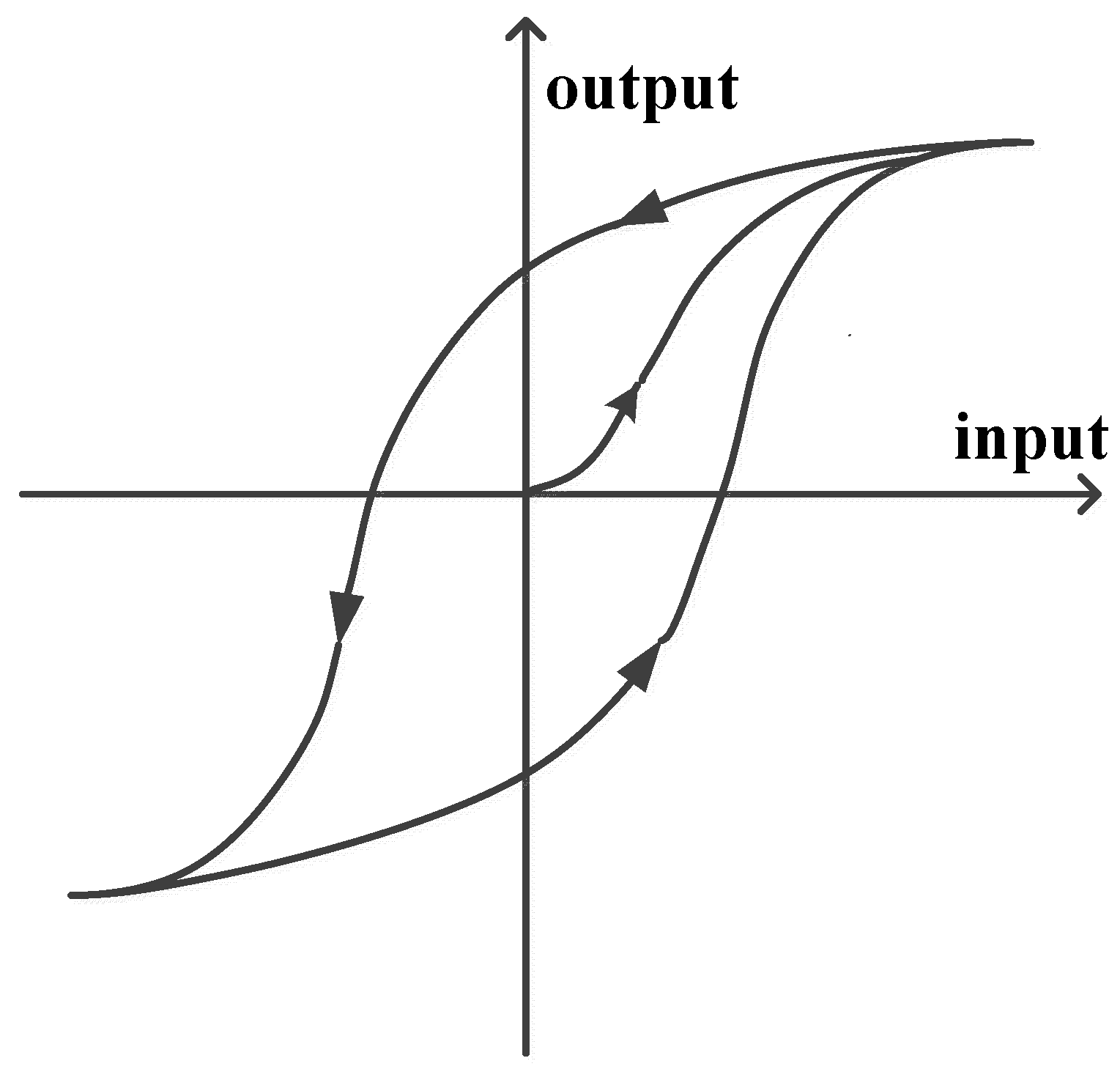


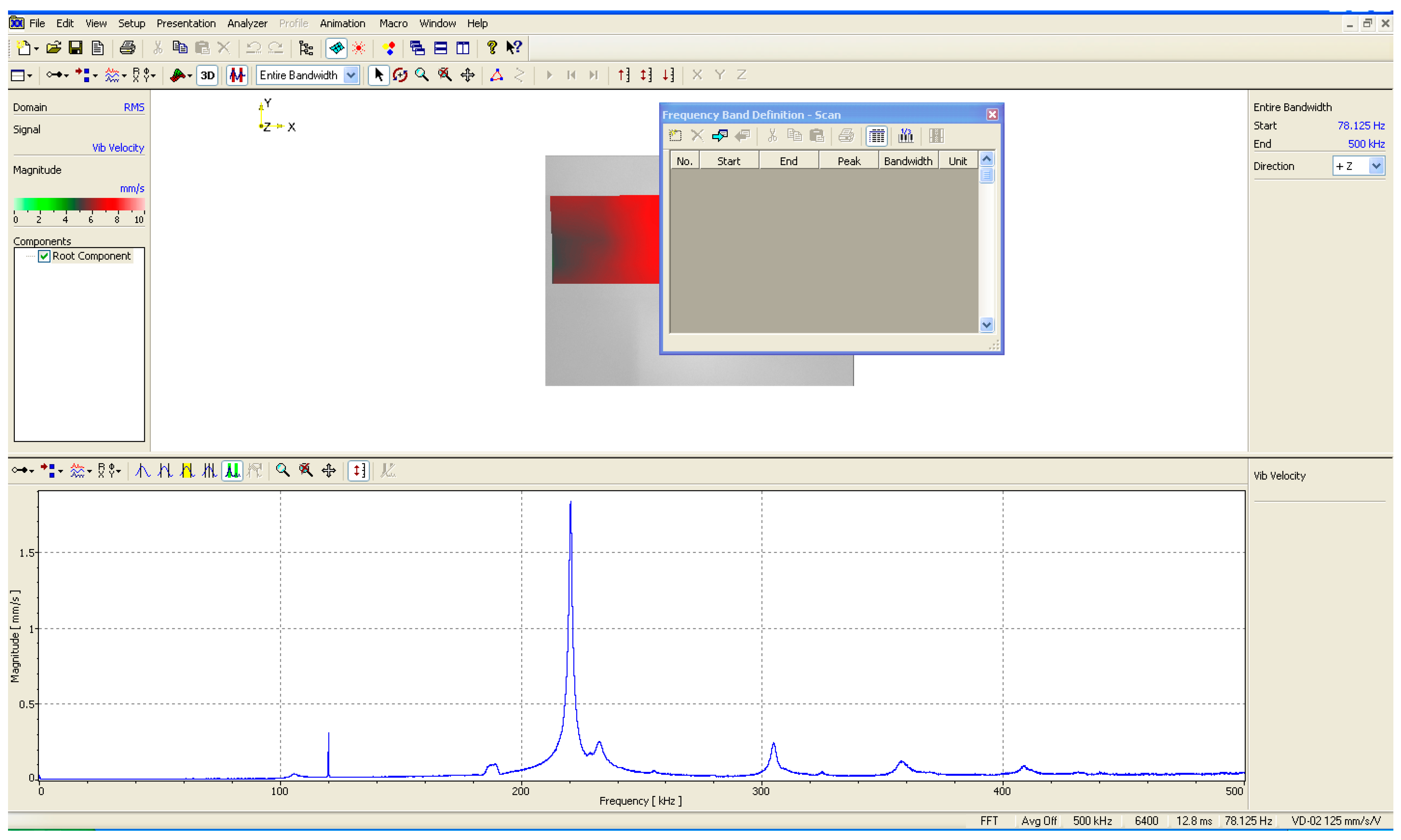

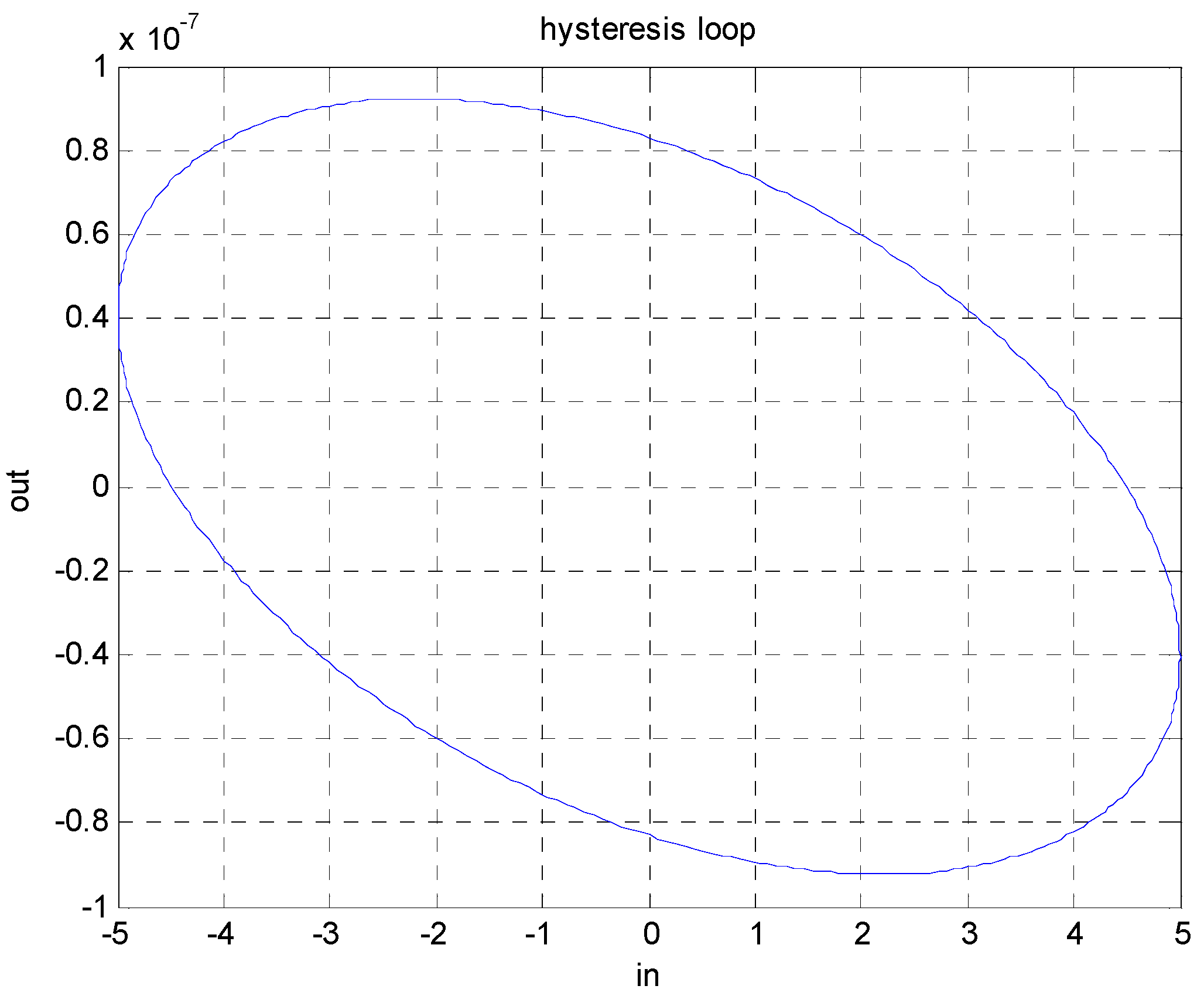
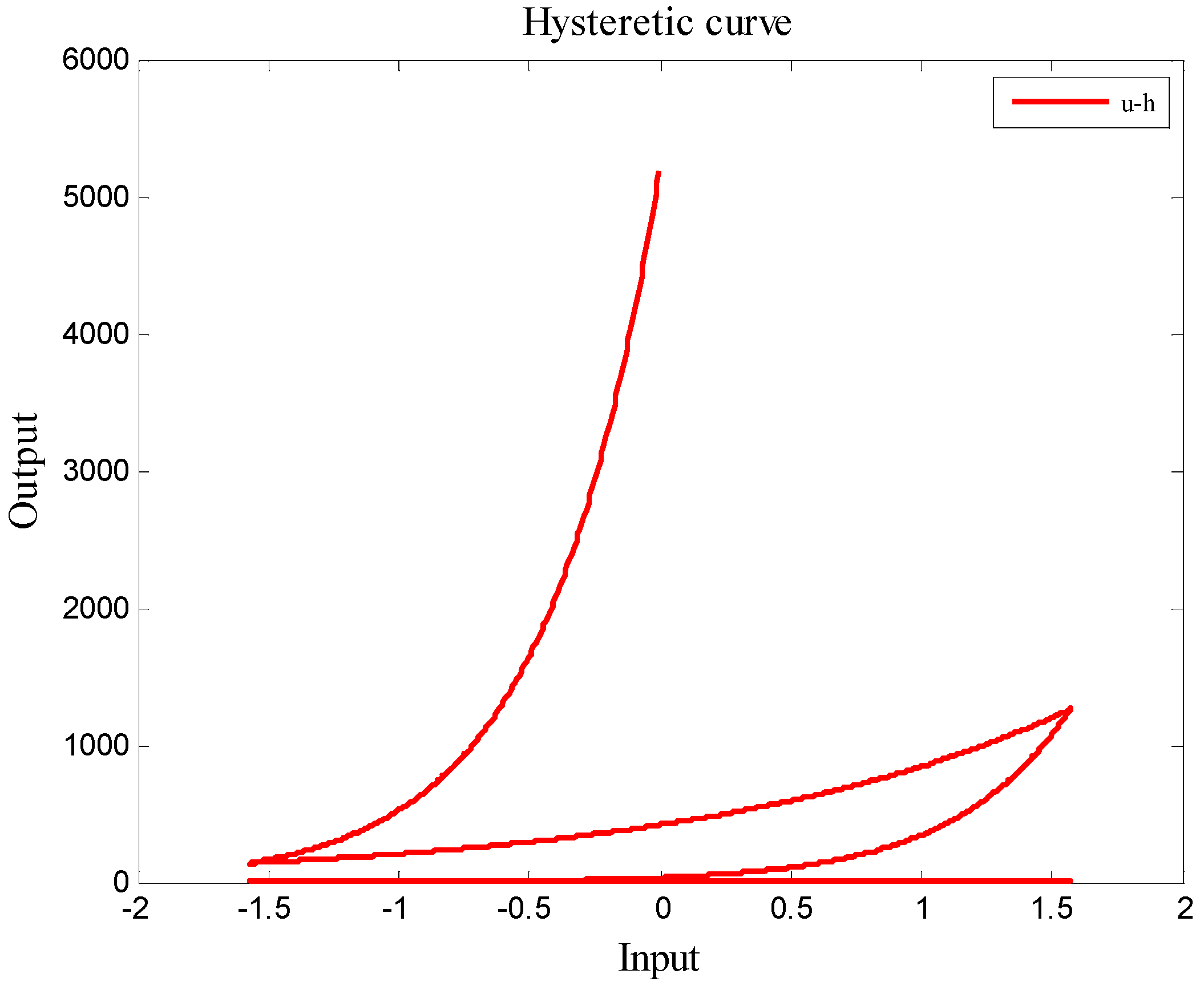
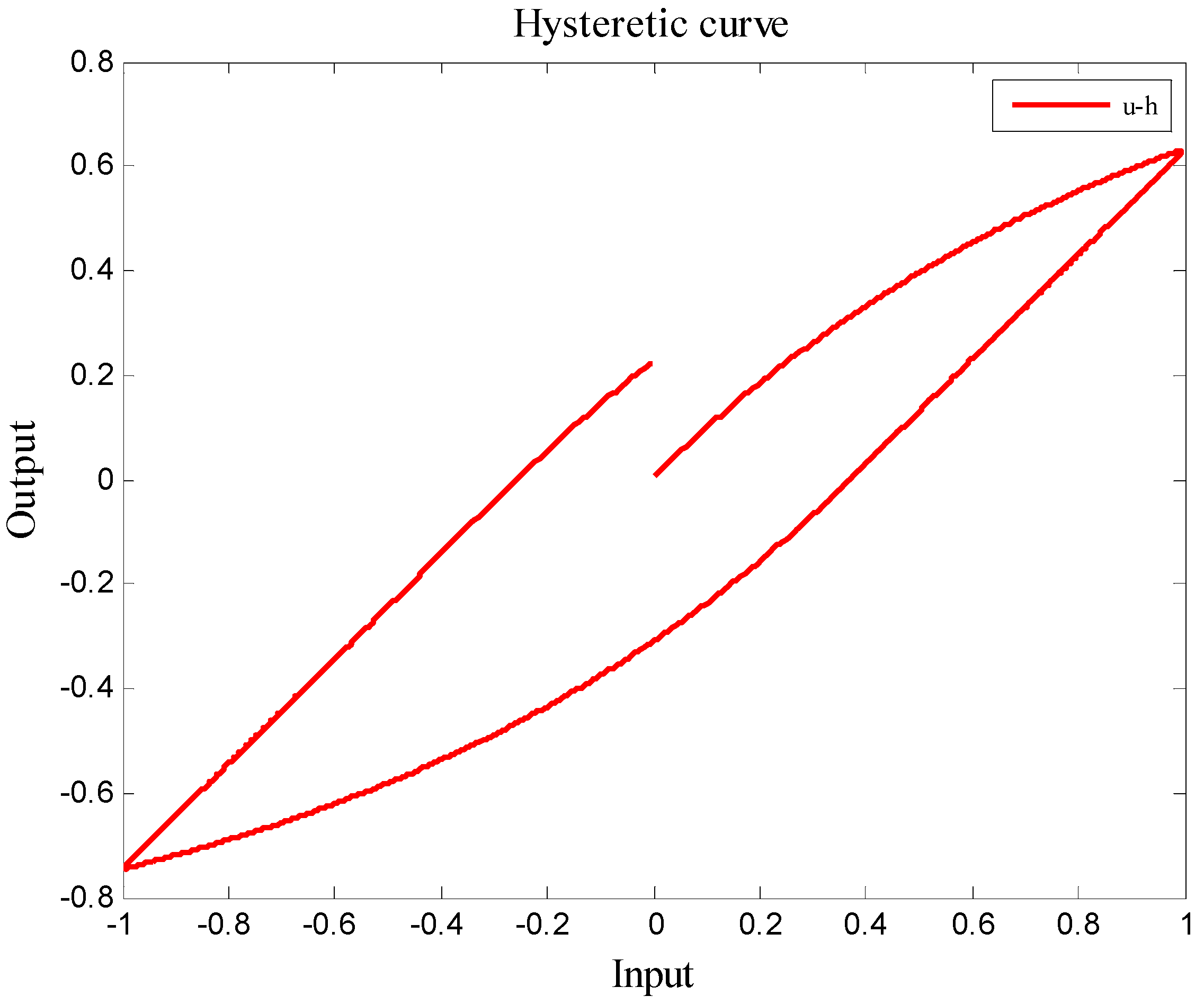
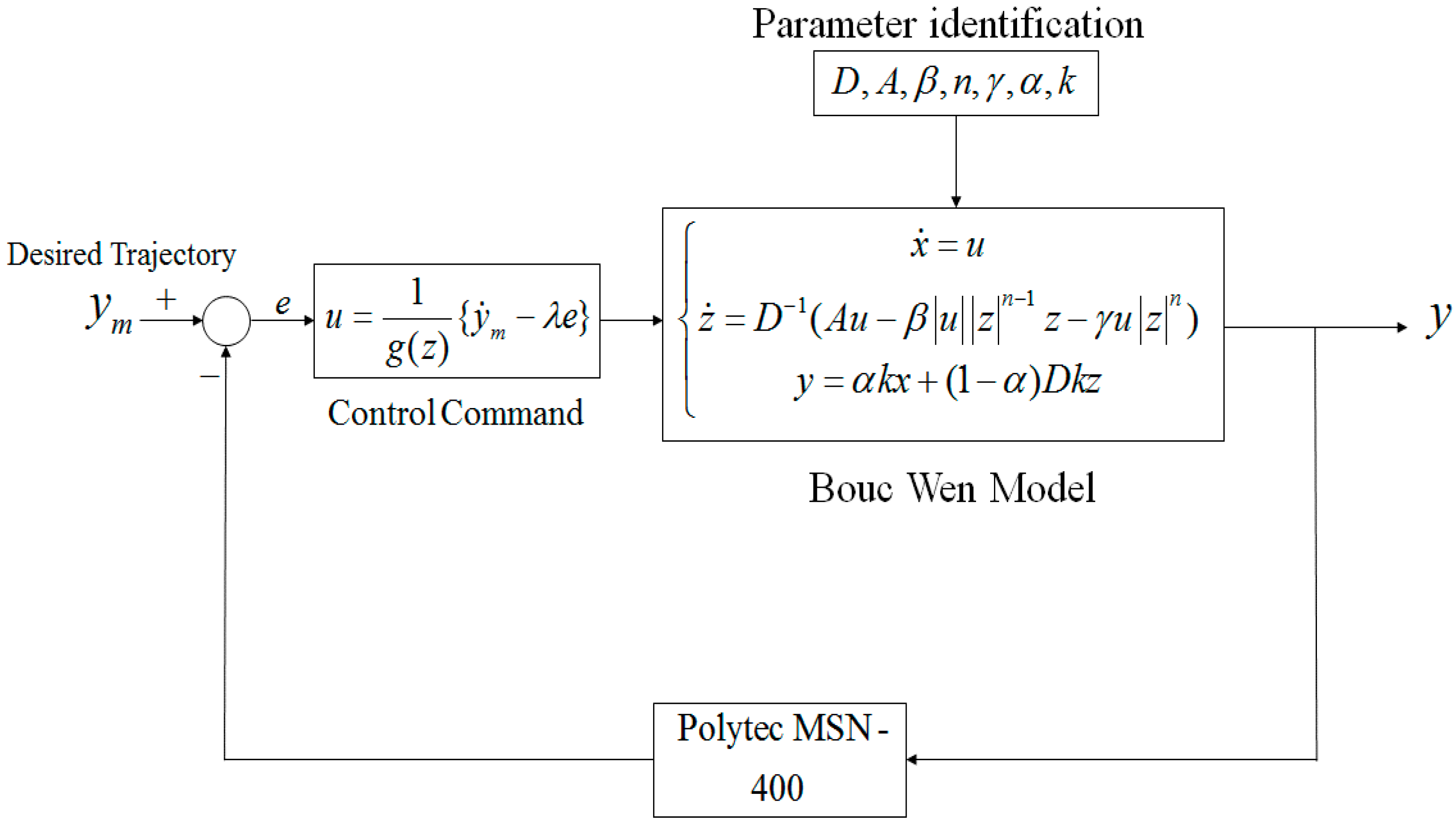
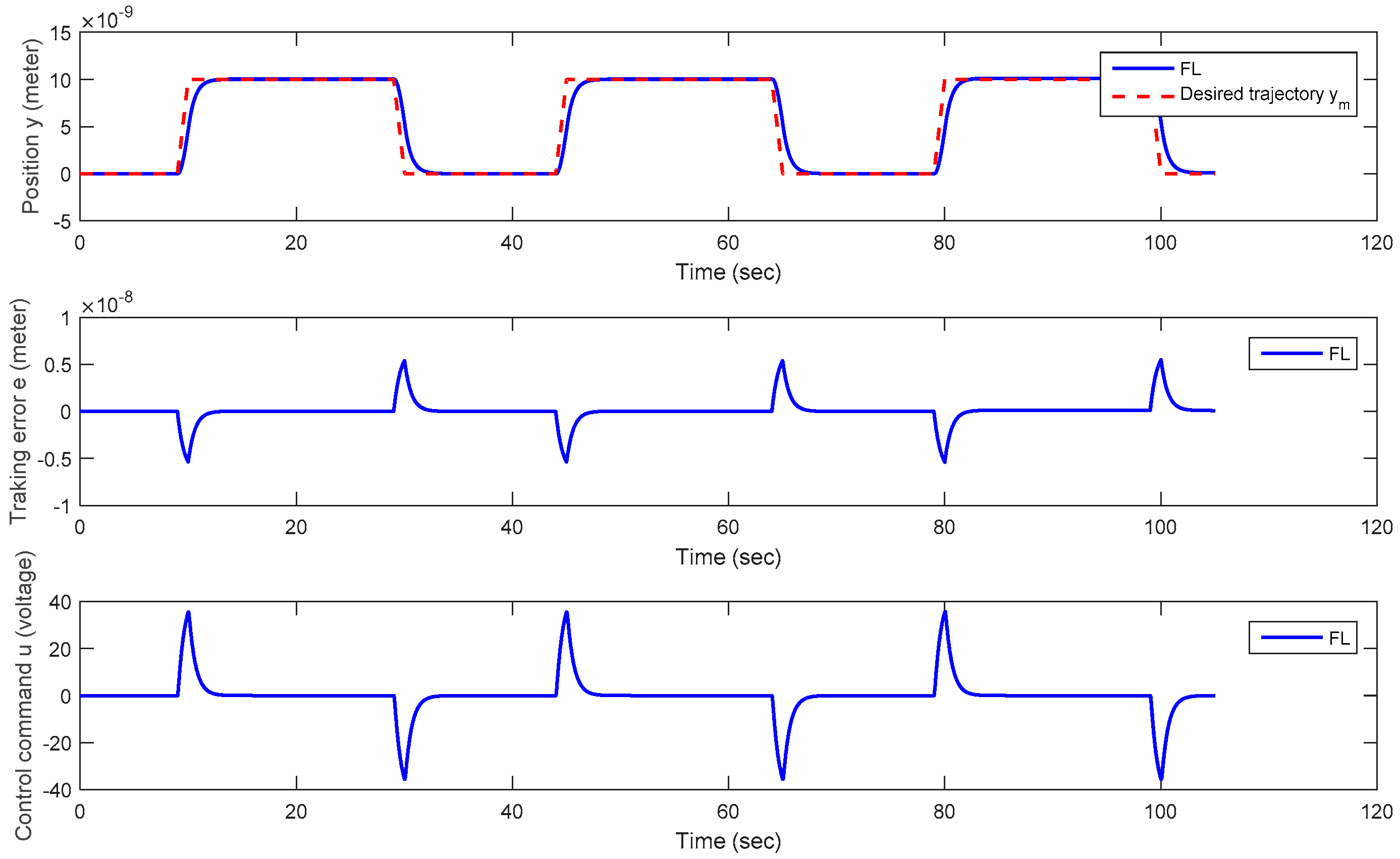
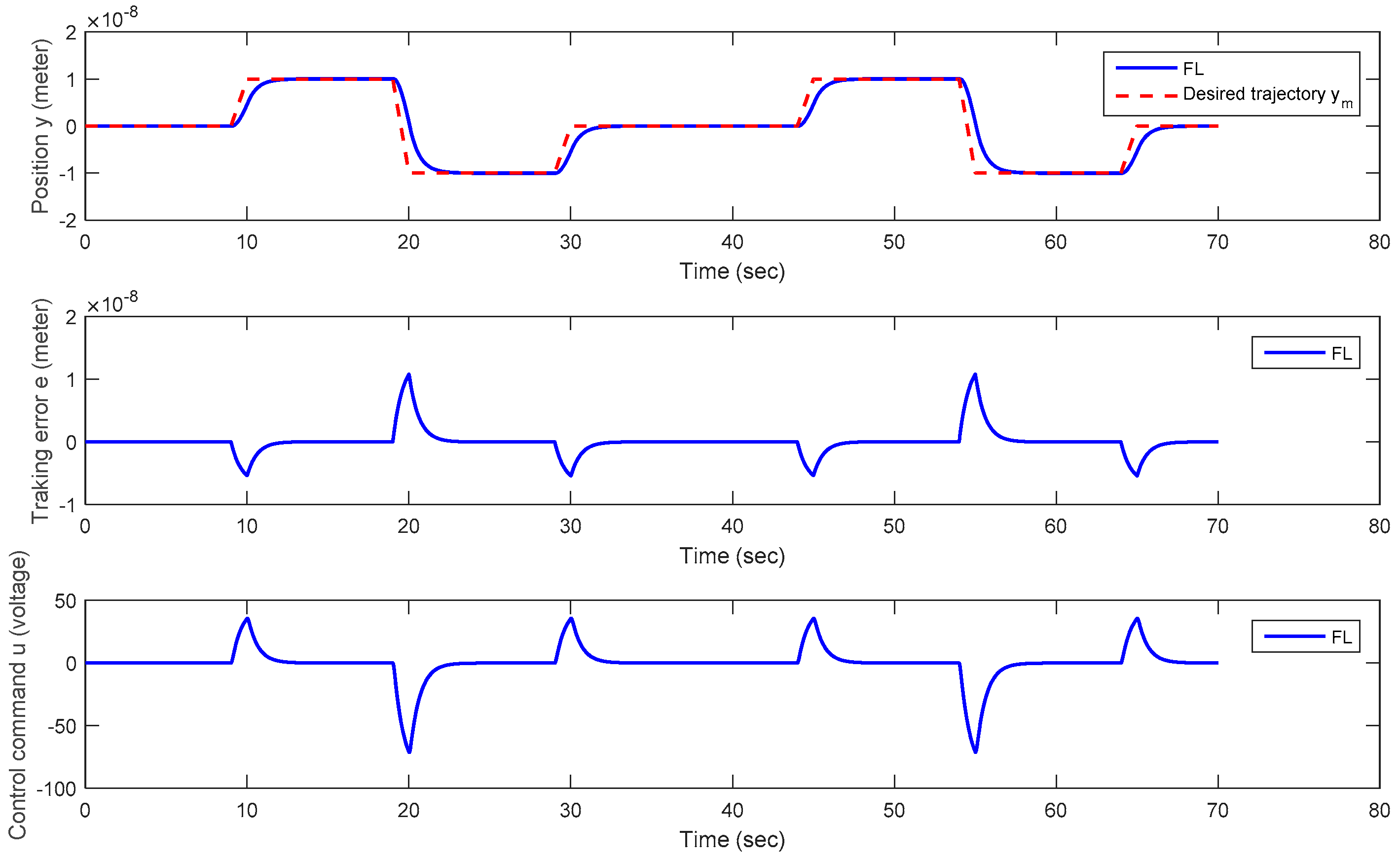
| Parameter | Value | Unit |
|---|---|---|
| n | 1 | (N/A) |
| A | 1 | (V/m) |
| k | 1.9567 × 105 | (N/m) |
| D | 1.7339 × 10−6 | (m/V) |
| α | 0.3575 | (N/A) |
| β | 0.0364 | (N/A) |
| γ | 0.0272 | (N/A) |
| Case | Condition | Ω | Upper Bound on | Class |
|---|---|---|---|---|
| A > 0 | β + γ > 0 and β − γ ≥ 0 | R | max | I |
| β − γ < 0 and β ≥ 0 | [−] | max | II | |
| A < 0 | β − γ > 0 and β + γ ≥ 0 | R | max | III |
| β + γ < 0 and β ≥ 0 | [−] | max | IV | |
| A = 0 | β + γ > 0 and β − γ ≥ 0 | R | V |
© 2017 by the authors. Licensee MDPI, Basel, Switzerland. This article is an open access article distributed under the terms and conditions of the Creative Commons Attribution (CC BY) license (http://creativecommons.org/licenses/by/4.0/).
Share and Cite
Chen, Y.Y.; Chen, Y.H.; Huang, C.Y. Nano-Scale Positioning Design with Piezoelectric Materials. Micromachines 2017, 8, 360. https://doi.org/10.3390/mi8120360
Chen YY, Chen YH, Huang CY. Nano-Scale Positioning Design with Piezoelectric Materials. Micromachines. 2017; 8(12):360. https://doi.org/10.3390/mi8120360
Chicago/Turabian StyleChen, Yung Yue, Yung Hsiang Chen, and Chiung Yau Huang. 2017. "Nano-Scale Positioning Design with Piezoelectric Materials" Micromachines 8, no. 12: 360. https://doi.org/10.3390/mi8120360




